Large Hadron Collider Reboot Explained And What's Next After The God Particle
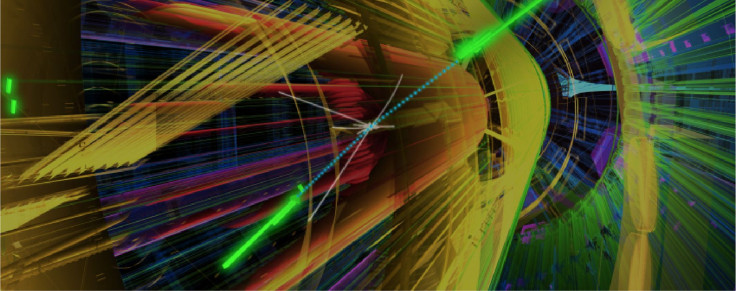
The Large Hadron Collider was turned off two years ago, but not before a revolutionary find. The discovery of the elusive Higgs boson, the so-called God particle, was so noteworthy it earned physicists Peter Higgs and François Englert -- who decades ago developed the theory that led to the July 2012 discovery -- the Nobel Prize in 2013. CERN will soon reboot the LHC after several years of repairs and upgrades, and when the particle accelerator turns on again in the spring, it will be better and faster. To celebrate the return of the Large Hadron Collider, let's look at how it was constructed and what it took to find the Higgs boson.
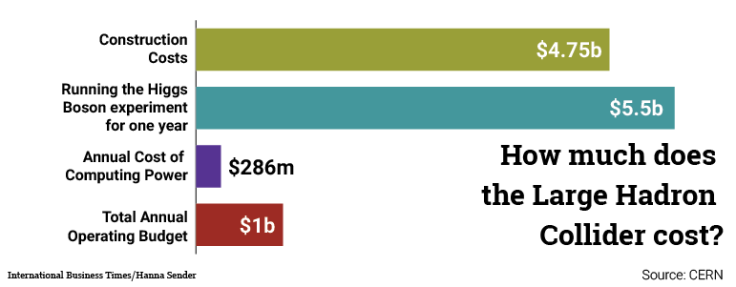
The total cost of the Large Hadron Collider is $13.25 billion, substantially less than NASA's $18 billion budget for 2015. It's a lot of money to throw into one project, but the Large Hadron Collider is searching for more than just the God Particle; several other unique experiments are underway within the LHC.
Among CERN's seven experiments with the LHC so far, the most famous are ATLAS and the Compact Muon Solenoid (CMS) detectors -- both helped discover and verify the existence of the Higgs boson on July 4, 2012. ATLAS and CMS are the LHC's general detectors and can be used for a range of investigations.
A Large Ion COllider Experiment (ALICE) is looking for matter that may have formed just after the big bang, quark-gluon plasma -- elementary particles bound by the "strong force," one of the fundamental interactions of nature -- which was like a "hot soup of matter." ALICE will smash massive ions to recreate the conditions of the early universe. "It’s a new form of matter and we want to know how it behaves and what its properties are—like its structure and how it acts at different temperatures," Peter Jacobs, a physicist from the University of California, Berkeley working on the ALICE experiment, explains to Symmetry Magazine.

Quarks, fundamental building blocks of matter, have some interesting names. The Large Hadron Collider beauty (LHCb) is looking for the beauty quark and subatomic particles thrown forward by the collision. Researchers will use these observations to evaluate predictions made by the Standard Model and try to explain why antimatter is so elusive, why we have been unable to detect any in the universe. Antimatter is matter with the same weight but with a different charge, like an electron with a positive charge, explains NASA. TOTEM and LHCf are also looking for forward particles while MoEDAL is looking for the magnetic monopole, a hypothetical particle with a charge.
In many ways, the LHC experiments are testing the Standard Model of physics. The Higgs boson was predicted to exist by the Standard Model, and if LHC found no evidence of the particle, it would have led to a new understanding of physics and our world. Confirmation helps clarify the Standard Model and gives us a better sense of the universe. The Higgs boson find was really big, but there's a lot we don't know about the particle, including why it has a lower mass than expected. ALICE and CMS will be used to hunt for dark matter, which makes up roughly 27 percent of the universe. CMS and ATLAS could team up to find evidence of extra dimensions, which could explain why gravity is such a weak force.
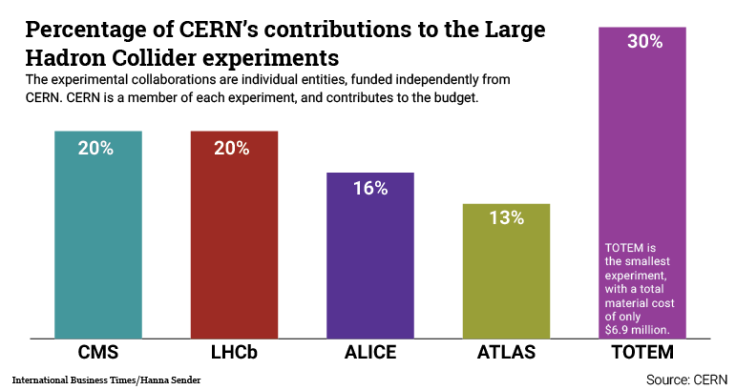
All of these experiments require a lot of energy. To put it in perspective, an average American household uses 10.8 megawatt-hours (MWh) of electricity a year, Google's data centers use roughly 250 MWh whereas the Large Hadron Collider uses 200 MWh a month during active months. But the project uses only about 10 percent of Geneva's total electricity usage and 0.1 percent of the energy used to run the Internet.
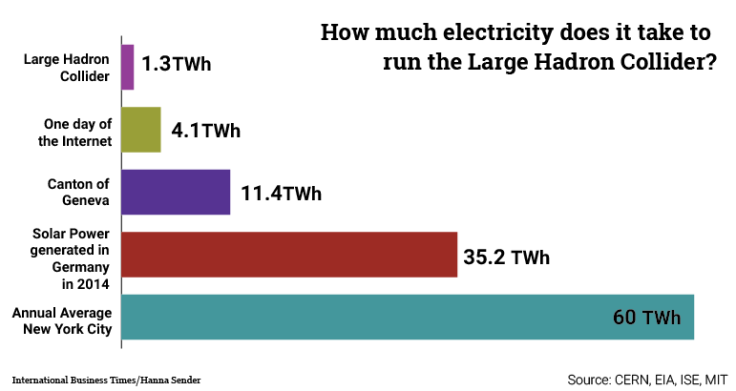
In this new phase of the Large Hadron Collider's experiments, some changes were made. 18 of the LHC's 1,232 superconducting dipole magnets were replaced. Other changes and modifications include:
"More than 10,000 electrical interconnections between dipole magnets were fitted with splices – pieces of metal that act as an alternative path for the 11,000 amp current, saving the interconnection if there is a fault. The machine will operate at a higher voltage to run the higher energy beams, and has been fitted with new sets of radiation-resistant electronics. The vacuum system that keeps the beam pipe clear of stray molecules has been upgraded, and the cryogenics system for the LHC's superconducting dipole magnets has been refurbished."
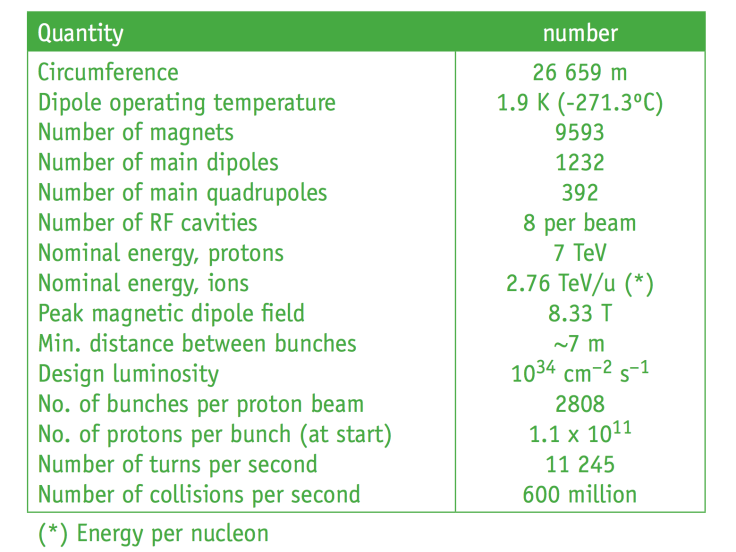
© Copyright IBTimes 2025. All rights reserved.






















